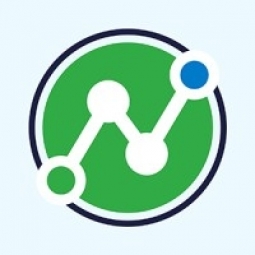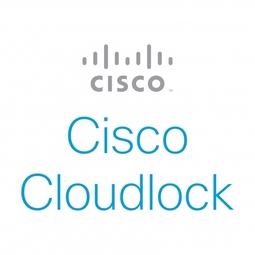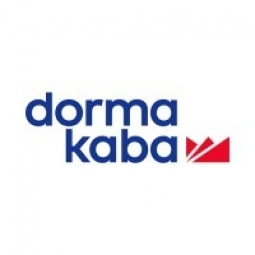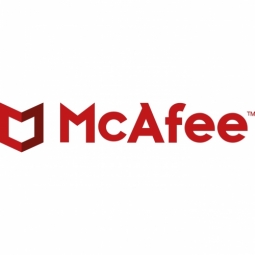Case Studies.
Add Case Study
Our Case Study database tracks 22,657 case studies in the global enterprise technology ecosystem.
Filters allow you to explore case studies quickly and efficiently.
Download Excel
Filters
-
(6,653)
- (2,601)
- (2,127)
- (945)
- View all
-
(5,642)
- (2,469)
- (1,692)
- (826)
- View all
-
(5,571)
- (2,178)
- (1,766)
- (643)
- View all
-
(5,247)
- (2,179)
- (1,715)
- (1,321)
- View all
-
(2,881)
- (1,448)
- (574)
- (376)
- View all
- View all 15 Technologies
- (1,985)
- (1,985)
- (1,915)
- (1,679)
- (1,629)
- View all 42 Industries
- (8,728)
- (4,742)
- (3,618)
- (3,233)
- (2,947)
- View all 13 Functional Areas
- (3,304)
- (2,787)
- (2,603)
- (2,006)
- (1,630)
- View all 129 Use Cases
- (13,581)
- (5,296)
- (4,272)
- (3,520)
- (2,856)
- View all 9 Services
- (504)
- (432)
- (416)
- (382)
- (301)
- View all 1083 Suppliers
Selected Filters

|
How Center6 Empowers their Customers with White Labeled Analytics
Center6, a leading data and information services provider, has been helping North America’s fastest growing homebuilders and developers optimize their operations through visual analytics, dashboards, and mobile reporting. However, their customers wanted to do more with the product and expressed a need for visually stunning reports that provide the views and interactivity required to gain critical business insights. More importantly, their customers had requested Center6 provide an end-to-end solution so they could remain within a single application, ultimately ensuring a superior, more seamless user experience. In order to meet the demands of their customers, Center6 began researching various BI, analytics, and data visualization vendors such as Tableau, QlikView, Microstrategy, and Microsoft Power BI.
|
|
|

|
How Medidata Accelerated the Time-to-Market of their BI Projects and Enabled their Clients to take Data-Driven Actions
Medidata, a Value-Added-Reseller (VAR) of Dundas Data Visualization, specializes in ERP software development for local Portuguese Governments. They were facing demands from their clients for software that allowed them to better analyze and interact with the valuable data produced from the ERP software they were using. Medidata felt it necessary to add a Business Intelligence (BI) and Analytics solution to their portfolio of software products. By providing a BI and analytics solution, Medidata’s clients would be able to make better and more informed decisions in order to improve their efficiencies and productivity, redefine their processes as necessary, and increase or decrease resources if needed. In addition to their external needs, Medidata wanted a BI and analytics solution that would detect issues regarding data quality within their own internally used software.
|
|
|

|
How InfoCloud Maximized Business Growth Potential While Reducing Operational Costs
InfoCloud’s customers wanted a flexible Business Intelligence solution with a competitive price-point and enterprise capabilities that were able to minimize their total cost of ownership, while still allowing for rapid return on investment. A lofty demand, made more difficult by the desire to have a solution that could provide a unique experience, tailored to each user, without restrictions. Through deep analysis, InfoCloud discovered a top business challenge their customers faced, was a lack of flexibility in their current solutions. InfoCloud felt it imperative to provide a solution that allowed their customers to design their own dashboards without limitations so they can run their business exactly as they envision.
|
|
|

|
How IT Weapons Differentiates its Services Using Visual Data Analytics
IT Weapons, a Canadian leader in secure cloud solutions and managed IT services, was facing a challenge with their client reporting process. The company was generating quarterly reports for clients using a semi-manual process that was time-consuming and labor-intensive. This process was costing the company the equivalent of one full-time employee per year. The static nature of these reports limited the clients' ability to plan effectively. The data in the reports aged quickly, but the effort required to generate the reports limited the frequency at which they could be produced. IT Weapons needed to find a Business Intelligence (BI) solution that could automate their entire process and create dashboards that clients could access at any time.
|
|
|

|
How Viamedia Transformed Their Way of Managing a Distributed Sales Team
Viamedia operates in over 70 markets across 35 states, and services their entire operation, regardless of function, from their corporate headquarters in Kentucky. As such, their Sales team is heavily dispersed throughout the country. Consequently, as Viamedia grew their operation, it became increasingly difficult for their Sales managers to correctly identify market performance, and even more difficult to obtain real, accurate data and effectively manage their teams via standardized guidelines. Viamedia recognized that in order to maintain their success, it was imperative they had access to an internal application that would empower management to ask the right questions at the right times, and enable them to understand how each market (individually and as a whole) was performing compared to goal presently, and at subsequent periods of time. Moreover, Viamedia coveted an application that would provide management with the tools necessary to deliver consistent and relevant coaching, and would help their Sales teams grow professionally, financially, and personally, and would improve their overall performance. Ultimately, Viamedia required an application that would allow them to identify potential performance deficiencies, and ensure key metrics were achieved by helping them make accurate decisions, backed by data.
|
|
|

|
How E-Tabs Partnered with Dundas to Create Highly Engaging, Customized Reporting Experiences
E-Tabs, a software company that develops and delivers highly customizable data visualization and report automation software and services, needed to expand its services to meet the unique needs of its clients in the market research industry. The company required a solution that could handle industry-specific functions such as statistical hypothesis/significance testing and low-base suppression, and prepare dashboards and reports that best support specific market research analysis. The challenge was to find a dashboarding vendor that could provide a solution as bespoke and responsive as E-Tabs itself. The company needed an analytics solution that their experienced data visualization team could take advantage of, to ensure their clients are empowered to deliver dashboards and reports that inform, engage and ultimately allow them to focus on their research.
|
|
|

|
How Devon Partnership NHS Trust Streamlined Reporting Processes to Maximize Top-Down Performance
Devon Partnership NHS Trust was facing challenges with their existing SharePoint portal and SQL Server Reporting Services (SSRS) which were used for reporting. The SharePoint portal was becoming overpopulated with Excel and SSRS reports, leading to difficulties in locating specific reports and slower operation speeds. The reports also appeared outdated, leading to low adoption rates and challenges in implementing a performance management culture. The reports were also difficult to develop and maintain, making it challenging for the Informatics team to deliver valuable data to the consumers in a meaningful way and in a timely fashion. The Trust needed to streamline reporting processes, increase user adoption, and reduce the number of requests to the Informatics team.
|
|
|

|
How BI is Changing the Way Health Data is Viewed by the Health Ministry and the Public
The Norwegian Directorate of Health was facing challenges in providing health data to the public in an accessible and understandable format. The data was previously served via static PDF files and reports with limited self-service capabilities, mostly showing data in tables. This made it difficult for citizens to consume the data, as it was hard to understand via tabular displays rather than visuals that highlight trends and patterns. The user experience was not engaging, and the data was static, preventing further exploration by users. The Directorate itself was also limited in its ability to publish new datasets and ensure that publications were up-to-date due to the technical nature of the process. The Directorate needed a modern solution to provide a better way for its users to explore, author new content, and consume data with less IT involvement.
|
|
|

|
7-ELEVEN Brings Key Promotions Insights IN-HOUSE
7-Eleven, a multinational convenience store chain, was seeking a solution that could be used by business users on a daily basis without much technical support. They needed to get results quickly to share with external business associates, and provide multiple capabilities at a marginal cost. The company wanted to bring all of their vendor data sources together into one output to get deeper insights into their promotions to see what’s working and what’s not.
|
|
|

|
More Time and Better Results with Siemens Gas and Power Thanks to Alteryx
The Siemens Gas and Power Division launched a productivity offensive for power plant service in 2016. The objective was to analyze areas where unnecessary costs, such as excessively high material expenses, could be prevented. With several thousand various measures, more than 5,000 different data sets, and over 8,000 employees in the business unit, the investigations were complex and time-consuming. The analyses were nearly obsolete by the time the results were available. The first step was to switch to Tableau to improve the visualization. However, the actual problem with the time-consuming and complicated provision of data was still not solved.
|
|
|

|
Torpedo7 Case Study
Torpedo7, a successful online retailer in New Zealand, was facing challenges with its data management. The company lacked reliable, up-to-date information, which was crucial for decision-making. The decision-makers within the company were unable to effectively communicate their data due to the lack of a suitable platform. Furthermore, they were constantly waiting on 'the data guys' to generate reports, which was a time-consuming process. The company was in need of a solution that could provide real-time updates and a collaborative platform for sharing data.
|
|
|

|
Federated Media Publishing Case Study
Federated Media Publishing, one of the largest owned and operated real-time ad exchanges in the world, was facing several challenges. The data they were dealing with was complex and inconsistent across different office locations. This led to an overloaded data management team that was struggling to keep up with the volume and complexity of the data. Additionally, the company needed custom Key Performance Indicators (KPIs) that could provide better insights for executives. The lack of a unified platform for sharing data and automating mundane tasks further exacerbated these challenges.
|
|
|

|
H&R Block Case Study
H&R Block, a global tax services provider, was facing several challenges related to data management and reporting. The company had many disparate sources of information, which made it difficult to consolidate and analyze data effectively. This resulted in a significant amount of time being spent on building reports. Furthermore, the company's leadership lacked critical data insights due to the fragmented nature of the data sources. The need for a solution that could provide a unified view of the disparate data sources and offer greater transparency across teams was evident.
|
|
|

|
Check Into Cash Case Study
Check Into Cash, a national leader in affordable short-term, small dollar credit solutions, was facing several challenges related to data management and reporting. The company was dealing with an overwhelming number of ad hoc reporting requests. The executives were not receiving reports in a format that was easy to understand and digest. Moreover, it was taking too long for the company to get updates on important metrics. These challenges were hindering the company's ability to make timely and informed decisions.
|
|
|

|
RelayRides Case Study
RelayRides, the world’s largest peer-to-peer car-sharing marketplace, was facing challenges in making sense of their vast amount of data. The manual reporting process was tedious and slow, which hindered the company's ability to make quick, data-driven decisions. The information wasn’t delivered in real time, which further complicated the decision-making process. The company needed a solution that could automate the reporting process and provide real-time insights.
|
|
|

|
Capco's Transformation with Domo
Capco, a leading provider of global business and technology solutions for the financial services industry, was struggling with a lack of visibility into multiple data sources. This resulted in hours of manual reporting that hindered executives’ ability to make informed decisions. The limited view of people data also impacted manpower planning. Capco needed a consolidated view into data that allowed them to look at data as information instead of just raw data.
|
|
|

|
Rakuten Marketing's Transformation with Domo
Rakuten Marketing, a global digital marketing technology and services company, was facing challenges in providing high-level data to its clients and executives. The reported information was often outdated, and the process of gathering and sharing data was too manual. This was a significant issue as Rakuten Marketing places high value on actionable information. The company needed a solution that could provide real-time, accurate data to its clients and executives.
|
|
|

|
Rapid7 Case Study
Rapid7, a leading provider of security data and analytics solutions, was facing challenges with their data management. Despite being a data-driven company, they were spending a significant amount of time each month creating recurring reports. This was not only time-consuming but also hindered their ability to innovate and analyze the most relevant data. They needed a reliable data management platform that could integrate seamlessly with their existing systems and provide access to the same data across the organization.
|
|
|

|
DTU (Technical University of Denmark) Case Study
DTU, one of the leading technical universities in Europe, faced the challenge of providing secure access to a wide range of systems and applications for its 1400 employees. The university's IT service function serves a wide range of departments, university entities, and affiliated companies who benefit from their modern IT setup and infrastructure. Employee remote access from across Europe is enabled through a number of login systems including Citrix, Cisco, and SSH. Initially, users accessing these systems were required to carry around hardware tokens for authentication when logging in. However, the token-based setup was becoming increasingly time-consuming to manage and was causing frustration for both users and the IT team managing the solution.
|
|
|

|
Pandora Implements CloudLock to Protect its IP and Ensure Confidential Information Like PII is Secured
Pandora, a leading internet radio company, has a highly mobile workforce that relies heavily on SaaS (Google Apps) and PaaS (Salesforce) for their daily operations. Google Drive is a crucial tool for Pandora's employees as it allows them to create, distribute, and update dynamic documents on active projects, and to share and collaborate both internally and externally. However, the security of Pandora’s shared documentation is a major concern. The company is keen on protecting its intellectual property and is concerned about data loss prevention. While employees rely on sharing documents to perform their jobs, the IT department is tasked with ensuring that sharing with external partners and vendors adheres to the company’s acceptable use policies and is done securely.
|
|
|

|
The Guest House at PNNL Offers One More Amenity: Keyless Access Control
The Guest House at the Pacific Northwest National Laboratory in Richland, Washington, was facing issues with its magnetic stripe keycard locks. The keycards often became demagnetized, leading to lockouts. As the front desk isn't staffed 24/7, an on-call employee had to issue new keycards to locked-out guests. This was causing inconvenience to the guests and was also time-consuming for the staff. The management was looking for a solution that could eliminate the need for keys and cards and reduce the time spent on access control management.
|
|
|

|
Ross Stores Case Study
Ross Stores, a large retail enterprise, was facing challenges with their existing web security solutions. The Palo Alto Networks & Bluecoat solutions they evaluated lacked in reporting and research capabilities. This led them to look for a more effective solution that could provide advanced threat protection, enhanced reporting functionality, and better integration with their existing systems.
|
|
|

|
Case Study of International Business Machines Corporation
International Business Machines Corporation was facing several challenges with their previous security product. The efficacy of the solution was low, and the company found it difficult to manage. Additionally, the solution lacked scalability, which was a significant issue as IBM needed advanced capabilities to protect its growing mobile and global workforce. The company evaluated several vendors, including Symantec/Blue Coat and McAfee Web Gateway, before choosing Forcepoint Secure Web Gateway.
|
|
|

|
Forcepoint Helps This Turkish Airline Move to the Cloud as Safely as it Flies in the Clouds
The airline's employees often work remotely using company laptops, exposing them to potential security threats from unsecured networks. The company also faced the challenge of complying with strict European GDPR regulations and Turkish Personal Data Protection Authority requirements for data security. The company needed a security solution that could protect its users and data, regardless of their location. The solution also needed to be scalable and capable of integrating other solutions to further improve the level of protection.
|
|
|

|
Lake Michigan Credit Union Case Study
Lake Michigan Credit Union (LMCU) is a large financial institution with over 300,000 members and $3.7 billion in assets. The company provides a wide range of financial services and has a high membership renewal rate. However, LMCU faces the daily challenge of keeping its members' valuable personal information secure. Financial institutions are a top target for threat actors worldwide, and any incident of data loss or theft could cause irreparable harm to customers and the business. LMCU's previous security solution did not offer unified visibility amongst the products and was lacking in actionable guidance for the IT department. As a result, time management was becoming more inconvenient for active users and administrators. They were spending too many man hours “minding” the system. Time spent repairing and monitoring the network was excessive and critical.
|
|
|

|
RWTH Aachen University Case Study
RWTH Aachen University, one of Europe’s most distinguished technological institutions, was facing a significant challenge in terms of network security. Like other research-oriented institutions, universities are an attractive target for cyberattacks, and, as a result, their criteria and demands for security are stringent. The Center for Computing and Communication of RWTH Aachen University had several important criteria for network security, including high performance and availability, heterogeneous infrastructure and system environments, seamless connections to several research networks, and the ability to support variable user roles, permissions, and access rights. The university needed a security solution that could manage a data load of more than 20 Gbps, while offering protection from an increasing number of targeted attacks at end-user devices.
|
|
|

|
Vectra AI
The company lacked an Intrusion Detection System (IDS) or Intrusion Prevention System (IPS) across its estate, which includes numerous offices across the country. This situation made it difficult for the company to monitor and flag up unusual network traffic for further investigation. The company was also struggling with false positives and had to invest time in tuning the system to reduce these. The company was looking for a solution that could provide visibility into behaviors across the full life cycle of an attack in their network, beyond just the internet gateway.
|
|
|

|
Vectra AI Review
The university was looking for a solution that required less customization and more commercial off-the-shelf capabilities. They wanted their team to focus on protecting the university rather than upgrading custom software. They needed a solution that could inspect and look for malicious, abusive, or other types of forbidden behavior with their north-south and east-west traffic. The solution needed to be able to differentiate between normal and abnormal events. The university also wanted to detect issues with privileged accounts, as they had users ranging from low-privileged, regular users to administrators with high levels of privilege.
|
|
|

|
REA Group Case Study
REA Group, a multinational digital advertising company specializing in real estate, was facing challenges in discovering and monitoring cloud usage in an open cloud environment and blocking high-risk sites and services. They needed to securely roll out sanctioned collaboration tools like Box to a global workforce. The company also aimed to deliver on security roadmaps while meeting the four pillars of REA Group’s technology strategy. As a cloud-first organization with 90% of its systems being SaaS based, the IT team at REA Group developed two parallel roadmaps for their technology and security teams that suited REA Group’s open technology culture and met the four pillars of its technology strategy: discovery, reporting, risk assessment and policy control.
|
|
|

|
Hydro Ottawa automates threat detection and response to dramatically reduce the time spent on threat investigations
Hydro Ottawa, the largest distributor in eastern Ontario, is responsible for delivering electricity to over 323,000 business and residential customers. With the surge in attacks on electrical grids and utility providers, the company needed to protect its corporate IT and critical infrastructure systems from cyberattacks. The challenge was to close the gap between infection and detection. The company needed to automate threat management that is simple to use and integrates easily with other security tools.
|
|




